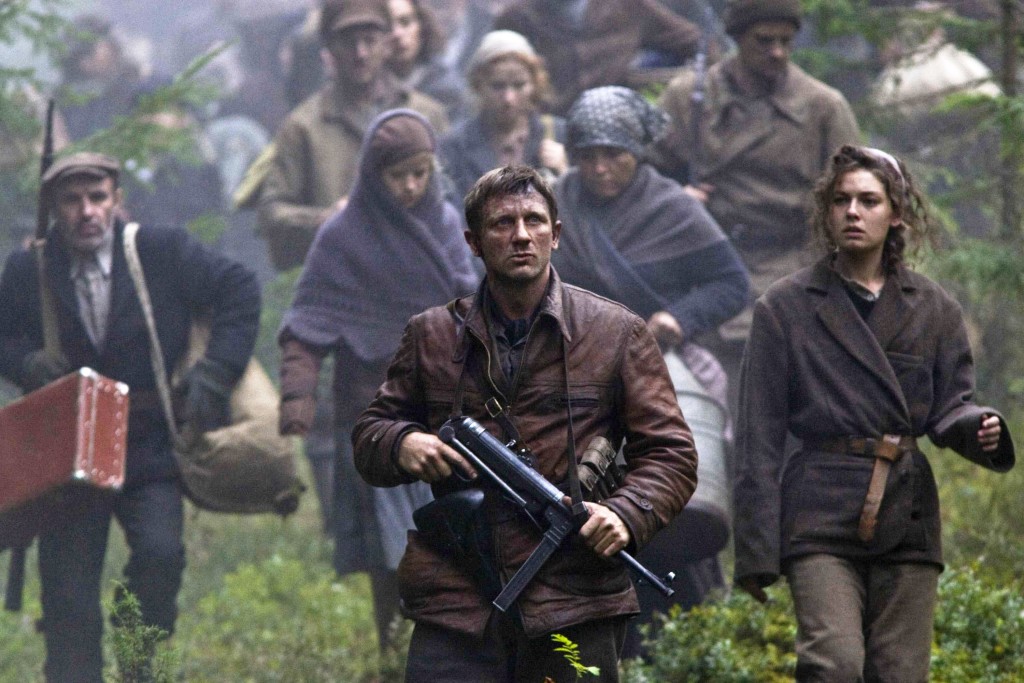Search Results for: the wall
Genre: Thriller
Premise: Pinned behind a wall on the battlefield of Iraq, a sniper’s only communication is the enemy sniper who’s intent on making him suffer before he dies.
About: Dwain Worrell recently found success selling this script to Amazon (their first feature spec purchase). It then finished number 5 on the Black List. Worrell has an interesting story in that, hurting for a job, he moved to China to teach English. Wouldn’t you know it, that’s when he finally found success at screenwriting, and has since moved back. On the flip side, many Chinese children will never be able to read Scriptshadow because of his success.
Writer: Dwain Worrell
Details: 86 pages
I’m not a sniper fan. I thought the 2001 sniper film Enemy at the Gates was the equivalent of watching the Yule log on repeat. I thought the American Sniper screenplay was a government experiment designed to make anyone who read it fall into a deep 24 hour hibernation. And while both of those stories suffered from script issues, I couldn’t help but think that the sniper subject matter was the real problem. Snipers as side characters – as, say, a problem for our hero when he’s trying to make it across a battlefield – that’s interesting. But as the main character, as someone who sits still for a long time and who’s at a safe distance from the action? – there isn’t anything exciting about that.
At least, I thought there wasn’t before I read “The Wall.” Finally, someone has figured out a sniper-centric situation with some actual drama.
The year is 2009. The war in Iraq is over. But as we all know, a war is never really over until the invading side leaves. And the invaders, the Americans, haven’t left yet. They’re at that messy stage of having to take the country they just bombed and build it back up. Which is where we meet our hero, Locke.
Locke, a sniper, and his partner Hobbs, his “spotter,” have been sent to a recent construction zone where the U.S. has been trying to build a school. But when they get there, they find a dozen dead workers, all of whom, clearly, have been shot by a sniper. The only thing that remains of their efforts is a 16 feet wide 6 feet tall brick wall.
After waiting forever to see if the zone is still dangerous, Hobbs inexplicably gets up to go check on the deceased. Surprise surprise, he’s shot by enemy sniper fire, and goes down. Locke tries to go save him but must take cover by the wall to avoid getting shot himself.
Soonafter, Locke is contacted on his radio by a superior who wants to know his position for extraction. It doesn’t take long for Locke to detect a fake accent, and identify the voice as Iraqi. This is “Ghost,” the sniper who has him pinned down.
What follows is a psychological battle of wits, as Ghost questions Locke on everything from American slang to a previous incident where Locke’s former friend and spotter mysteriously died on Locke’s watch.
As a deadly wound slowly bleeds out, Locke has an hour at most (URGENCY – YAY!) to figure out where the sniper’s hiding, as killing him is his only chance at getting out alive.
This is a really clever spec idea. Something we talked about recently was the difference between a “script” and a “movie.” Sometimes something reads really well on the page, but it doesn’t transfer well to screen. And the knock on the Black List is that it has a lot of good scripts, but not many of those scripts are “movies.”
When you contain your story, it becomes even harder to write a movie because you’re limited to one place. Movies like lots of places, lots of action, movement, changing scenery. So something where, say, three people are locked in a room during the apocalypse, might read well, but visually it’s going to get pretty boring on the big screen.
With The Wall, even though it takes place in a single area, it’s a very cinematic single area. It’s a battlefield. And the threat of our main character being sniped at any moment gives it the same kind of intensity you would feel in your typical scene from Mission Impossible 5. Put simply, despite its small scope, this FEELS like a movie.
And Worrell mixed in a couple of clever devices to heighten that intensity. Another writer may have made Locke the lone character in this script. That’s the “first idea” version of this story. Instead, we have Hobbs, who gets taken down on the battlefield. But the clever part is, Hobbs isn’t dead. And Ghost doesn’t know he’s not dead. So while Locke is having this conversation with Ghost, Hobbs uses minimal movements to scan the area, to try to locate where Ghost is hiding. The whole movie we’re desperately hoping he locates Ghost before getting caught.
Worrell also uses a mystery box of sorts with Ghost. Ghost knows who Locke is. He knows his rank, his experience, even specific details from his life. So this whole time we’re trying to figure out who Ghost is and how he knows these things.
Finally, Worrell gives Locke an unresolved event from his past that the two characters can discuss – the death of his former spotter. What starts out as a straightforward story of a soldier dying on the battlefield turns out to be a lot more complicated. If Locke and Ghost only have surface-level things to talk about (sniping, their religious beliefs, their opinion about war), the dialogue’s going to get boring fast. We need that thread that we can keep coming back to, that the audience is going to want an answer to. That’s what the spotter thread did.
There were a few things I thought could’ve been done better though. I couldn’t, for the life of me, understand why Hobbs would walk out into a group of 12 dead guys who had been shot by a sniper. I’m not a soldier but something tells me that’s a really dumb move.
I wished Worrell would’ve better explained who and what a spotter was. I’m not familiar with the army so I wasn’t even aware there were spotters. This becomes very important (spoiler) later on when Ghost’s spotter comes into the mix and he’s in a different location. My understanding of spotters was so limited that I didn’t get how a spotter could not be next to his sniper.
Yes, it’s tricky to figure out how to convey details like this without getting too exposition-heavy. But that’s one of the requirements of being a writer. You’re counted on to find creative solutions to tough problems.
Finally, I wanted more from the ending (reverse spoiler). There were all these hints during the story that the enemy sniper may have been one of their own (an American sniper). I was expecting a big twist at the end, one that possibly tied into Locke being responsible for his old spotter’s death (was he still alive? was he behind this??). I guess this was based on a real story though (Ghost was a real Iraqi sniper) so Worrell wanted to stay true to that. But something about this script was begging for a last second twist, and I was a little disappointed when we didn’t get one.
Still, this was a well done job by Worrell and a really cool little screenplay. Can’t wait to see what he comes up with next.
[ ] what the hell did I just read?
[ ] wasn’t for me
[xx] worth the read
[ ] impressive
[ ] genius
What I learned: The inner monologue versus the outer dialogue. A conversation is never a straightforward thing where the world stops while words are exchanged. Characters are usually thinking about something else when they speak, and what they’re thinking about can help inform the scene. You may be talking to your boss, for example, but thinking about your date with his daughter later. You might be at a party talking to someone you don’t like, and therefore scanning the room, looking for someone to save you. You may be talking to a teacher in a parent-teacher conference, who’s telling you that your kid isn’t paying attention in class, and all you’re thinking about is, “That’s because you’re the worst teacher in America.” In The Wall, Locke spends almost the entire conversation with Ghost looking for a way out. He’s never just having a conversation. He’s strategizing, manipulating, hunting for a clue as to Ghost’s whereabouts. That’s a huge reason why the dialogue pops here. Because the inner monologue is contrasted against it.
Genre: Horror
Premise: A mysterious drifter gets stuck inside a Chuck E. Cheese like entertainment center called Wally’s Wonderland where the animatronic creatures come alive and kill.
About: It’s here. The single greatest Nic Cage movie that hasn’t been made yet. Wally’s Wonderland! An idea so fun it seems impossible no one’s come up with it yet. I guess the universe needed the idea to collide with a certain Direct-to-Digital icon before it was ready to unleash the greatest midnight horror film ever… that hasn’t been made yet. I read somewhere that the writer wanted to make “the ultimate B movie that was so absurd you had to tell your friends about it because of how stupidly awesome it was.” I admire a writer who knows exactly what he wants.
Writer: G.O. Parsons
Details: 93 pages
When one reads Wally’s Wonderland, one has to ask the question: “Will this be the greatest B-movie ever made?”
Nick Cage taking down an animatronic ostrich with a mop could be this generation’s cut yourself out of the inside of a shark with a chainsaw moment.
I can tell you something this script taught me right off the bat. It’s in reference to idea creation. There are big news stories in our pasts that just sort of came of nowhere and everyone talked about them. Then, just as quickly as they arrived, they disappeared. If you can identify one of these stories and find a movie idea for it, you’ve got something that already has “concept cache” because it’s been proven to capture peoples’ interest.
I remember those news stories about how pedophiles and sickos used to hang out at Chuck E. Cheese because that’s where all the kids were. Today’s script has taken that idea to the next level, centering around a group of these degenerates who sacrificed their souls in order to live on in animatronic form.
The Janitor is driving his jeep down a lone highway in Middle-of-Nowhere Nevada when, all of a sudden, all four wheels blow out at the same time, bringing him to a screechy scary stop. And yet the Janitor is unphased. By the way, it’s never clear if The Janitor is named The Janitor because he *is* a janitor or because he must become a janitor due to his circumstances. Such details are unimportant in Wally’s Wonderland.
A tow truck shows up and a man named Jed explains to The Janitor that the police were chasing someone the other week, put out one of those spike lines to blow the guy’s tires, and, wouldn’t you know it, forgot to recollect it! He takes The Janitor back to his garage where he gives him the damage – $1000. Unfortunately, Jed informs him, they don’t take credit cards. It’s clear that The Janitor doesn’t have cash on him so Jed offers an alternative.
Cut to Wally’s Wonderland, a long since closed-down Chuck E. Cheese knock-off. The owner, Tex Macadoo, is planning to reopen the place. But he needs someone to clean it up first, make it spick-and-span. If The Janitor is quick, Tex tells him, he should be able to finish the job by morning. The Janitor hasn’t said a word to anybody yet. He doesn’t even react. He just stares intensely at whoever’s talking to him.
Wally’s Wonderland is a freaking mess. Remnants of hundreds of sad 1990s birthday parties are scattered about haphazardly. And then there’s those rusty creepy animatronic dolls (Pirate Pete, Beary the Bear, Ozzie the Ostrich, and Wally the Weasel) up on stage. They stand there staring out at nothing. Or at least that’s what we think. What The Janitor doesn’t know is that Jed and Tex have locked him in the building. He’s about to be sacrificed to these animals… which are very much alive!
The first one, Ozzie the Ostrich, strikes almost immediately. But a strange thing happens when he attacks. Unlike the other humans who freak out and run and scream for their lives, The Janitor just stands there waiting for the Ostrich and then cracks him in the face with his mop. He then relentlessly beats him to a wirey pulp.
You’d think that after an animatronic Ostrich tried to kill you that you’d prepare for battle with the other three fake animals in the room. But not The Janitor. He simply goes back to work, determined to clean the place up before dawn.
Meanwhile, a group of high school kids led by a girl named Liv head to Wally’s World to burn it down. They know the town sacrifices people in there and they’re going to put a stop to it. But first they have to get The Janitor out of there. So they head up to the roof where they’re able to gain access inside. Once in, however, things don’t go according to plan. The animatronic animals are more than happy to fatten up on young human flesh.
Strangely, The Janitor doesn’t care. He really really really wants to clean. Unless a kid being eaten is directly in the way of doing his job, he ignores them. It’s not clear whether The Janitor doesn’t realize he’s been conned or if he knows he’s been conned but still wants to clean the place. Either answer is acceptable to me.
You know where this is headed. The whole time, Wally the Weasel has been sitting atop his stage perch, awaiting all his other minions to take their shot at the Janitor. And when they fail, he must now get the job done himself. Nicholas Cage……….. vs. a 9 foot animatronic weasel. I’m going to ask you an honest question. Do you even need to go on with life after this battle? Cause I don’t think I do.
One of the first things I wondered before reading this was how is Nicholas Cage going to fight animatronic monsters for 90 minutes inside of five rooms? I was worried the flame was going to burn bright then go out before the second half.
So I liked what Parsons did. He brought in these high school kids. Not only did that give us more battles to show, but The Janitor plays an Equalizer-like character. He handles every attack with ease. So we needed characters who STRUGGLED to defeat these things to make it more interesting. Remember, that’s where you grab the viewer – when things are unknown. If we know our heroes are going to win every fight, there’s no conflict, there’s no uncertainty, and therefore there’s no tension. Bringing those kids in was key.
Also, if you have a character who’s as unstoppable as The Janitor is, you need to look for ways in the second half of the movie to handicap them. That way they don’t have access to their fighting superiority and you DO get uncertainty in their fights. When the town realizes that The Janitor is winning, they go back in, handcuff him, and leave him there so that he can be properly sacrificed. So now The Janitor has to fight with his hands tied behind his back! That’s smart screenwriting.
It also helps, in movies like this, if you can occasionally take us outside. Technically, you can keep everything inside. It’s certainly cheaper to do it that way. But even in script form, there’s a “claustrophobic” feeling that sets in if you’re not occasionally cutting away from the place. So it was good that we’d occasionally cut back to the bad guys. We even get one great scene where the bad guys are driving away only to see an animatronic penguin bash through their windshield and attack them.
This also allows you to cut out boring stuff. If we stayed inside the whole time, we’d have to show The Janitor after he killed someone or washing his hands or doing other boring things. By occasionally cutting outside, we could cut back to the Janitor all set up in a new spot to clean. It’s an aspect of screenwriting I don’t talk about much because it’s unsexy. But the advantage of cutting away to anything is that you can then jump forward in time to a story-convenient plot point once you come back to your A-story.
The only thing I’d probably change here is to have a little more fun with the animals’ personalities. Each animal should have a distinct approach and style and way they talk. This is a stupid example but if there was someone named “Cheaty Cheetah,” he might talk really really fast. Disney movies are good at this. In Zootopia, there was that scene at the DMV and they were stuck with a sloth who spoke at -50 miles per hour. This is such an absurd premise that you might as well lean all the way into it.
Either way, I had a lot of fun with this and I hope they figure out a way to have midnight showings in Los Angeles because that is exactly how this movie is meant to be enjoyed.
[ ] What the hell did I just read?
[ ] wasn’t for me
[xx] worth the read
[ ] impressive
[ ] genius
What I learned: Handicap your hero as the script goes on! Whether your hero is as capable as Denzel Washington in The Equalizer or as outmatched as Bruce Willis in Die Hard, look for ways to handicap them as the story goes on so that their job gets tougher. The tougher it is, the more we’ll doubt they can succeed. That’s where you want your audience. You want them thinking, “There’s NO WAY they can pull this off.”
Today’s review asks the question, “When it comes to Horror, is slow the way to go?”
Genre: Horror
Premise: A group of twenty-somethings go camping in the forest for the weekend only to find themselves trapped by a growing form of man-eating sludge.
About: This script made last year’s Blood List. Kevin Kolsch and Dennis Widmyer are writer-directors who made Starry Eyes, Holidays, and who just recently completed shooting the new Pet Cemetery.
Writers: Kevin Kolsch & Dennis Widmyer
Details: 89 pages – 3/8/17 draft
You would think, when it comes to horror, that the scariest things would be the things that strike the fastest. And while in real life, that may be true, the opposite seems to be the case in film. Zombies move at one-fifth the speed of the average man. Yet there’s nothing more terrifying than a group of zombies stumbling towards someone when there’s nowhere to hide. A ghost who appears on the opposite end of the room is equally terrifying. And it doesn’t have to move at all.
Why is this the case? Well, it’s because horror works best in the LEAD-UP to the attack as opposed to the attack itself. The slower the monster moves, the more you get to milk the suspense. And the suspense is where our fear resides. This isn’t always the case, of course. The T-1000 in Terminator 2 was pretty damn fast. But it serves as a reminder that when you’re picking your horror concept, not to overlook slow.
Twenty-somethings Rich, his girlfriend Katie, Fitz, and his girlfriend Ziggy, are taking the weekend to explore a cool isolated waterfall Rich knows about deep in the woods. Katie’s convinced her younger resistant sister, Kimberly, to join them. Millennial mindsets lead to a lot of bickering about how far they have to walk, until they come across a large fence, which Rich doesn’t remember being there. Eh, no worries. They cut through the fence and finally find the spot.
After Kimberly refuses to join the crew in a skinny dip, bitch Ziggy starts heckling her. The two get into a scuffle and Kimberly storms back to the car. Unfortunately, she doesn’t make it. While crossing a seemingly normal pathway, she begins to sink into the ground. She screams for help, but no one hears, and she slowly disappears below the surface.
Back by the water, Katie starts to worry about her sister, and recruits the others to look for her. Rich branches off, finds a large mud patch, and sees the outline of Kimberly inside of it. Rich runs over to pull her out, but quickly finds himself sinking as well. The rest of the group arrives, and Rich explains to them that they have to stay away. He’s in some kind of quicksand, but it’s not like normal quicksand. It burns.
As the group tries to figure out a way to save Rich, Rich decides to get the car keys out of his pocket so the rest of them can go for help. He gets the keys, but when he lifts his hands, the skin and flesh fall away like hot oatmeal. Definitely not your average quicksand. Rich dies soonafter, sinking into the muck, but his hand and the keys remain lifted in the air. “Why hasn’t he sunk all the way?” they ask. “It’s taunting you,” Katie says. It’s then that they realize, this death-quicksand is alive. And it’s going to eat each and every one of them before they can escape this place.
As you can see, our antagonist is about as slow as can be. Sludge. It needs you to walk into it, as opposed to it coming to you. And once you’re in it, you don’t die right away. You die a slow agonizing death. This allows you to create long drawn-out suspenseful scenes where characters get caught, and all you can do is watch from the sidelines as they dip deeper and deeper into their grave.
As a writer, this is a dream scenario, because you can belt out large sequences that are inherently nail-biting. One of the primary scenes in the script – Rich getting stuck in the mud and needing to get keys out of his pocket so the rest of them can escape – is 17 pages!! That’s one-sixth of your screenplay right there! That’s what you call your premise doing your work for you.
Unfortunately, the writers make a classic horror mistake. They don’t put enough work into the characters. The audience only cares about a character in peril if they care about the character. So it doesn’t matter how suspenseful a scene is if we don’t care about the people participating in that suspense. Everyone in The Swallow is a cardboard cutout. You want to know how the first character in the script is described? “RICH (23, rugged, handsome).”
That’s it. That’s an actual description. Do you want to know how many characters I’ve seen described as “rugged and handsome” in the 7500 scripts I’ve read? At least 500. Probably more. If you’re going to describe someone generically, how can I not see them as anything other than generic?
There are some writers who will argue that you want to keep your descriptions generic because, that way, you keep the casting as wide open as possible. I can go along with that IF the characters then take action or make choices that define them. You don’t need to give Han Solo some Pulitzer-winning description as long as you have him kill Greedo a couple minutes later. That ACTION just told me everything I need to know about Han Solo, regardless of what his introduction was.
Likewise, I’ll forgive a sparse description if the characters reveal themselves through dialogue. Go watch The Breakfast Club. Those characters are the defining examples of characters we know due to what they say. I’m looking for originality, specificity, and creativity in dialogue, particularly from characters this young. 22 year olds are going to be on the cutting edge of slang. Here, the dialogue is extremely basic. There’s no personality to it at all.
So if you’re going to get a horror script right, guys, you have to get the characters right. I mean look at Monday’s film, Halloween. It wasn’t perfect. However, there was a LOT of character work stuffed in there. Laurie Strode had a super-extensive backstory. The granddaughter is dealing with the complexity of wanting her grandmother back in the family despite the fact that her own mom has disowned her. In The Swallow, the only backstory is the car ride it took to get here. Without depth, without originality, without personality, how can we connect to your characters.
Honestly, I blame 80s horror for this. A lot of people see that decade as the Golden Age of horror and it basically amounted to a cool killer and a bunch of nameless victims. Not to say some of those movies aren’t fun. But filmgoers are more discerning today. They need to connect, if only a little, in order to stay invested. Remember, they’ve always got their phones and their computers next to them if you don’t do your job.
The Swallow is a pretty fun idea. And I could see this being made. But you need someone to come in and rewrite these characters. Right now, they’re not enough.
[ ] What the hell did I just read?
[x] wasn’t for me
[ ] worth the read
[ ] impressive
[ ] genius
What I learned: Don’t describe a character in a way that you can SHOW the character. One of the characters here is described as “quick-witted.” Why would you tell us that? Just show us. The very first time somebody says something to that character, have that character come back with something quick-witted. Boom, you’ve done your job. We now know they’re quick-witted.
Hey guys, sorry for the lack of posts. I enjoyed the holidays too much, apparently. So here’s how this week is going to work. This is TUESDAY’S post. Wednesday is another review. Thursday is an article. Friday is the Scriptshadow Tournament. The good news is that tomorrow or Wednesday, I’m sending out a NEW NEWSLETTER! And I review a really good script from a really good screenwriter. Or, at least, it’s good so far. :) So make sure to sign up for the newsletter at Carsonreeves1@gmail.com.
Genre: Period/World War 2
Premise: A paratrooper finds himself stranded behind enemy lines when his plane goes down while on one of the most important missions of World War 2. Can he still complete the mission in time?
About: EDIT (UPDATE) – Oh wow, they just attached Bradley Cooper hours after review went up. Talk about timing this just right. :) Zach Dean is a mainstay on the Black List. This is either his 3rd or 4th entry on the list, and his writing seems to get better each time. This one finished on the lower half of the 2015 List. Atlantic Wall was sold in PITCH FORM in a competitive bidding situation. That’s what happens when you’re getting on the Black List every year, boys and girls. Companies start competing for your scripts!
Writer: Zach Dean
Details: 116 pages
If you’ve been here long enough, you know how I feel about World War 2 stories. There are in the neighborhood of 300 movies about World War 2. So if you’re going to bring a new story to the table, it better be unique. One of my favorite World War 2 movies is Life is Beautiful because it’s a CONCENTRATION CAMP COMEDY. How could that movie NOT be unique??
What I don’t like is when writers use a generic World War 2 situation that isn’t that interesting just so they can slap that “World War 2” label on their logline. Like that Daniel Craig movie – what was it? Defiance? About a bunch of people who lived in the woods during World War 2 (“We must go deeper into the woods, Frank.” “Deeper? But we’re literally 100 miles from civilization.” “God dammit, Frank, I said DEEPER!”) WHAT THE FUCK WAS THAT MOVIE????
My favorite talk show right now is, by far, James Corden. My least favorite is Seth Meyers. The reason Corden is so good and Meyers is so forgettable is because James Corden asked the question, “What do we bring to the table that the other talk shows don’t?” Or, more to the point: “Why do we deserve to exist?”
By asking that question, they had no choice but to differentiate themselves. So they added a multi-interview format instead of one guest at a time. They created segments that were online friendly (Carpool Karaoke) and dance numbers (Intersection Musical). Meanwhile, what does Seth Meyers do? He brings the exact same no-frills format that talk shows have been using for 50 years and his late-night show is the least watched as a result.
This is a long-winded way of saying, your idea must have a reason for existing. If you’re just writing something because it has a cursory attachment to a high-profile event, it’s going to reflect in the execution. One of the reasons it’s taken me so long to read this Black List script is because I was afraid that was the case. I’m hoping I’m wrong. Let’s find out…
It’s 1944 and Britain is about to enact something called Operation Overlord, where they’ll fly over the channel and invade Nazi-occupied France. However, there’s a secondary component to this attack.
France has been using secret operatives who have been meticulously marking where all the key German gun points are. With this knowledge, the British-American Coalition will know exactly where to land, which areas to avoid, and how to attack to destroy the Germans. Without this information, they’d be walking in blind.
There’s only one issue. The map has only just been finished. And the attack is launching tomorrow. This leaves American Captain, Lowry Scott, and his team, just a tiny window to get in, grab the map, and get out.
So Scott and his team fly in. Everything seems to be going well. And then Scott’s plane gets shot down. Scott is the only one to survive, and finds himself having to evade the entire Nazi army to get to the rendezvous point.
Once there, Scott secures the map, but not without needing to slaughter a clan of curious Nazis. His attache, close to death, makes Scott promise he’ll take his 10 year old son, Jasper, to his sister. Jasper, ironically, is the one who performed all the reconnaissance for his father and is responsible for this invaluable map.
An annoyed Scott pairs up with Jasper and is able to fulfill his end of the bargain. But when a traitor disrupts the French resistance, Scott and Jasper will need to come together once again to both get out alive, and get that map to the higher-ups so that the invasion can be a success.
This was a lot better than I thought it would be.
There’s one thing you can learn right away from this script and it’s an approach all writers should hang their hat on. When you have a big idea, you want to find the small personal story within it.
A lot of writers will take an idea like this and cut between seven different groups of characters as they all get ready for the big invasion. It’s a common mistake when doing a period or war film and it results in too much jumping around where we never get to know or care about anyone, and therefore don’t give a shit what happens.
What Dean does here instead is he finds this personal story to tell. Our hero teams up with a kid and the two must escape an entire occupied country that’s looking for them.
This leads to the second thing Dean does well: GSU (goal, stakes, urgency).
Goal: Get the map back to his superiors.
Stakes: If he doesn’t, an entire operation will fail, and hundreds of thousands will die.
Urgency: The invasion is happening that day. So he needs to achieve this FAST.
When you combine this with an unresolved relationship between our two leads, Scott and Jasper, you have yourself the ingredients for a kick-ass movie.
This is where the World War 2 tag HELPS your script – when you’ve written something good. Because it acts as a PUBLIC IP in that everyone’s heard of World War 2. So, naturally, it’s easy to promote.
In a film market where everyone (and when I say everyone, I’m talking about the studios as well) struggles to make consumers aware of their product, paying hundreds of millions of dollars to do so, it’s nice to have something well-known in your back pocket (World War 2) to instantly create recognition.
Think about how hard it’s been for them to promote spec scripts Passengers and Collateral Beauty this holiday season. There’s nothing either film can throw at you that creates instant recognition besides movie stars. And movie stars, strangely, aren’t enough anymore.
In addition to this, Dean has researched the shit out of his script, making sure we believe what’s going on. I bring this up because there’s nothing worse than a World War 2 script where it’s clear that the writer doesn’t know a) How war really works, b) the unique details of World War 2 including weapons, vehicles, and protocol, c) the fine print of the subject matter he’s writing about.
I’m not saying the writer should go into exquisite detail about each German gun being shot (more on this in “What I Learned”). I’m saying that we never question any object, person, or interaction because they all felt so damn authentic.
And yet, despite this elaborate research, Dean never forgets to entertain. This is another common amateur mistake. Writers will get that research down, but then that’s ALL they get down. Everything is meticulously described and yet we’re bored to tears because nothing fun or dramatic is happening.
We get lots of Entertainment 101 scenes here, like the dickhead SS officer prepping to kill Julian for accidentally splashing water on his shoes. Or we get to know Scott’s entire team, only for them to be blown to pieces before the mission. That’s how you entertain – throw a plot twist in there that we’d never expect.
Atlantic Wall is a really well-researched fun romp with lots of GSU and, in my opinion, Dean’s best script to date.
[ ] What the hell did I just read?
[ ] wasn’t for me
[xx] worth the read
[ ] impressive
[ ] genius
What I learned: If there isn’t a lot of dialogue in your script, make sure you’re focusing on ACTION rather than DESCRIPTION. In other words, write less about what we’re looking at and more about WHAT THE CHARACTERS ARE DOING. As long as you’re documenting action, the reader feels that SOMETHING IS HAPPENING and is therefore less likely to get bored. It could be cleaning a house. It could be charging up to a bully to settle a score. It could be adding another target to the Operation Overlord map. What you don’t want is a lot of description of rooms or fields or people or vehicles. That’s not to say you won’t describe things. You’ll just do it quickly, expanding only if the moment is really important. But, for the most part, description equals to boredom. Focus on what your character IS DOING instead.
Long story short, I’m on a mini-vacation in Portland. Yesterday, I went over to the Food Truck Square and did a food crawl. Next thing I knew, I woke up in a park post-sundown with several half-empty bags of food and the worst stomach ache this side of a pie eating contest. A few transients in the area seemed very worried about me. They said I wandered up asking about a peanut butter pickle cheeseburger before doing something I called the “Dance of the Raspberries.” After some Chinatown-esque investigatory work, I concluded that someone had roofied my Food Truck food, although it’s unclear why they would do so. Everything was still in my wallet except for my library card. I also Googled “peanut butter pickle cheeseburger” and found out that it exists. Whether or not I consumed one yesterday and said consumption contributed to my demise is still a mystery.
When I did come home and try to do a script review for Seth Rogen and James Franco’s “The Interview,” I passed out before I could get to the finish line. But I do have a TLDR version of the review – “Pineapple Express in North Korea. Kind of funny. What I learned: With Neighbors and now The Interview, the high concept comedy is back! But I’m not sure the ‘wish’ type high concept comedies like Liar Liar are in favor. This implies that more reality-based ideas are en vogue.” I sincerely hope I recover enough to get an article up tomorrow. But Portland seems to be a bit of a Wonderland. There are so many holes to fall into, and not a lot of ways to get out. Until the next time (if there is a next time), good night, and keep Portland weird.








